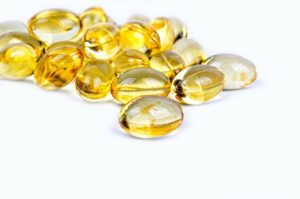Do Magnets Reduce Pain?

Healing effects have long been attributed to magnets and magnetic fields. From the discovery of lodestones, weak naturally magnetic stones that were initially used in compasses, magnets have long been assumed to have healing properties and used in medicine. While there are a plethora of magnetic healing devices, including shoe insoles, mattress pads, smaller treatment pads, bracelets and others, the research on using magnets for pain relief is somewhat limited. And of the studies available, many are not well done or were poorly blinded, meaning subjects were often able to discern the presence of a magnet due to its effects on other iron-containing objects.
Still, magnets are fairly cheap and readily available. And side effects from exposure to magnets appear to be quite minimal. It’s worth exploring the research to try and understand if the application of magnets could have benefits for pain treatment.
Hip and Knee Pain
Studies exploring magnet exposure for knee and hip pain due to a number of different causes have been explored. For patients with chronic knee pain, a pad containing magnets or placebos was worn over the knee for two weeks (Hinman 2002). Individuals treated with magnetic pads had significantly greater pain reduction and joint mobility as compared to placebo.
A study in rheumatoid arthritis of the knee used the application of magnets for pain relief (Segal 2001). The study compared a “four pole magnet” with a standard magnet of much less intensity for a one-week treatment duration. The stronger four-pole magnet provided 40% pain relief as compared to just 26% with the weak magnet.
One study used magnetic bracelets worn around the wrist as compared to a placebo bracelet for knee and hip arthritis pain (Harlow 2004). For patients wearing the magnetic bracelet, pain was reduced by almost 20% after three months as compared to placebo.
Abdominal or Pelvic Pain
A gynecological clinic treated women with chronic pelvic pain with magnets or placebo over abdominal trigger points for four weeks (Brown 2002). The active magnet treatment reduced pain scores by 31% as compared to just 6% with placebo.
Women with painful menses were treated with a strong magnet or a weak magnet placebo (Eccles 2005). The device was placed over the pubic bone and worn two days before their menses through the end of their period. Women wearing the active device had a 22% reduction in pain as compared to just 6% with the weaker magnet.
Fibromyalgia
Fibromyalgia is a chronic pain condition that is not well understood. The condition usually involves whole body pain, poor sleep, fatigue and brain fog. Two studies on magnet-containing mattress pads appear to suggest modest benefits for the condition.
The first study lasted four months with subjects sleeping on a mattress pad with magnets or a placebo pad. The subjects sleeping on the magnets had a modest but significant improvement in pain, sleep and daily functioning (Colbert 1999). A separate study found a significant difference in pain intensity versus placebo, with non-significant benefits in functional status (Alfano 2001).
Negative Studies

While the positive studies are interesting, there are negative studies, although most of them used magnets of lower power than the studies that found positive effects. Most studies that found positive effects used magnets over 500 gauss, whereas negative studies used magnets under.500 gauss in strength. Shorter studies were also typically negative. One study that used shoe inserts compared to molded insoles found that the two were equivalent for heel pain (Caselli 1997). A similar study in 2002 with magnetic foot insoles or placebo also showed pain relief, but no benefit over placebo (Winemiller 2003).
One short study for low back pain found that weak magnets applied just six hours per day for one week did not produce significant pain relief greater than placebo, although pain levels were still reduced (Collacott 2000). A really short study that applied 1000 gauss magnets for just 45 minutes over the wrist for carpal tunnel syndrome did not find any significant pain relief (Carter 2002).
Nickel-Coated Magnets
Most of the stronger, commercially-available magnets are made of neodymium and plated with nickel. Nickel is a common skin allergen and could easily cause skin reactions if used continuously against the skin. For treatment, magnets should be enclosed in a cloth or plastic covering to protect the skin from direct exposure.
Conclusion
Magnets are a simple and safe intervention that appear to provide pain relief when used in higher strengths, typically above 500 gauss, and when applied for longer periods of time. Most clinical studies have used magnets below 3000 gauss, so the safest effective range for medical use with the current data appears to be magnets of between 500 and 3000 gauss in strength.



